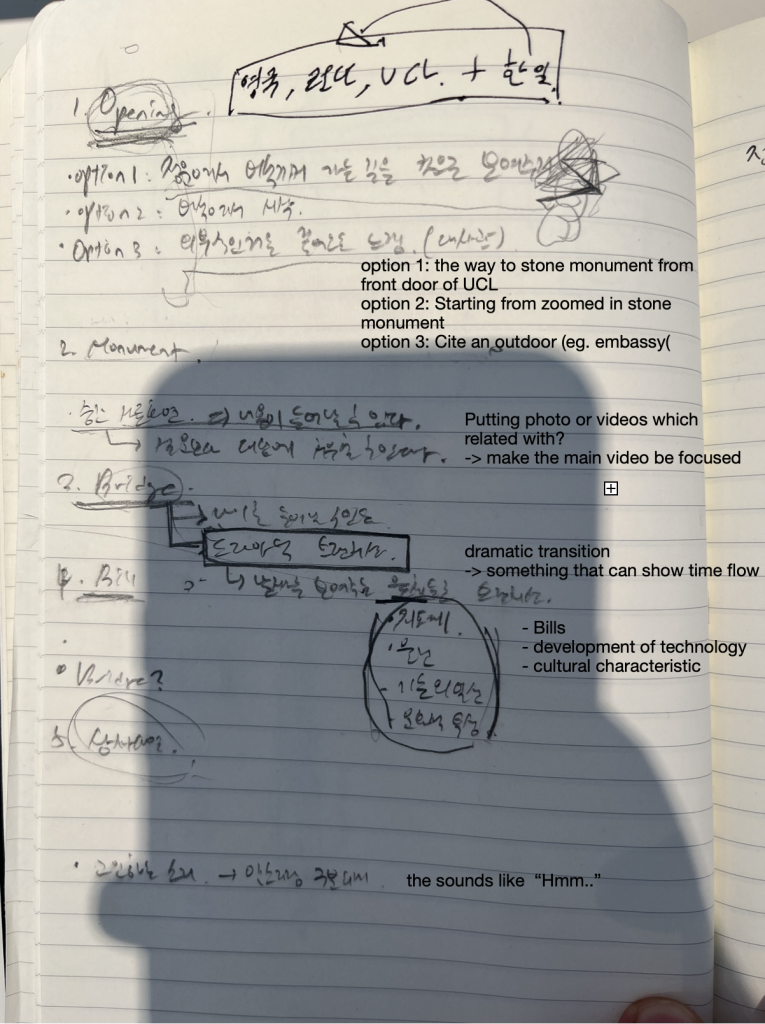After several rounds of test shooting, we held a meeting to come up with a more detailed and complete storyboard idea. While it is important to have a solid concept when creating a video, in the end, it is the attention to details—such as transitions, openings, and closings—that determines the overall completeness of the work. This meeting was held to discuss precisely those aspects.

Our initial focus was on the opening and the transition. For the opening, we considered three main ideas.
The first idea was to show the path from the main gate of UCL to the memorial stone. This method is commonly used in documentaries and would allow viewers to think about the location and significance of the monument. However, there was a concern that this approach might make the video feel too conventional or overly serious.
The second idea was to start with a close-up of the monument and then zoom out. This method would create a clean and focused beginning, drawing the viewers’ attention to the start of the video. However, the downside was that since the monument alone would be shown, those unfamiliar with UCL’s Japanese Garden might not understand what the stone is or where it is located.
The third idea was to incorporate external elements—such as embassies or UCL itself—to indirectly reveal the subject of the video. This method could show both the broader theme of the video and the location of the monument. While this approach might be slightly more challenging to edit and could risk breaking the video’s cohesion if not done carefully, we ultimately decided to go with the third option. We believed that with enough effort, this method would allow for a natural and in-depth introduction without compromising the relational narrative of the video.
Next, we discussed the transition between the monument and the banknote. Although a clean visual transition would have been nice, we thought it would be more meaningful to show the time gap between the Itō associated with the monument and the Itō represented by the banknote. To achieve this, we decided to use objects shaped similarly to rectangles—the common shape of both the monument and the banknote—for the transition. We plan to find and shoot objects that can indirectly or directly represent the passage of time and have some relation to Itō.
We also discussed whether to insert archival footage, such as photos or videos, during the interview sections related to the monument. My collaborator suggested that archival materials could indirectly respond to Itō’s answers. However, he emphasized that he hoped viewers would reflect on the questions we raise and the situation itself, rather than be guided by our direct opinions through the video. Thus, we decided to omit the use of archival footage.
Based on today’s discussion, we plan to go out and shoot the opening and transition scenes. We will also continue making test recordings from time to time. Moreover, since it is approaching the time when we need to wrap up the project, we are planning to start filming demo versions of the final videos as well.